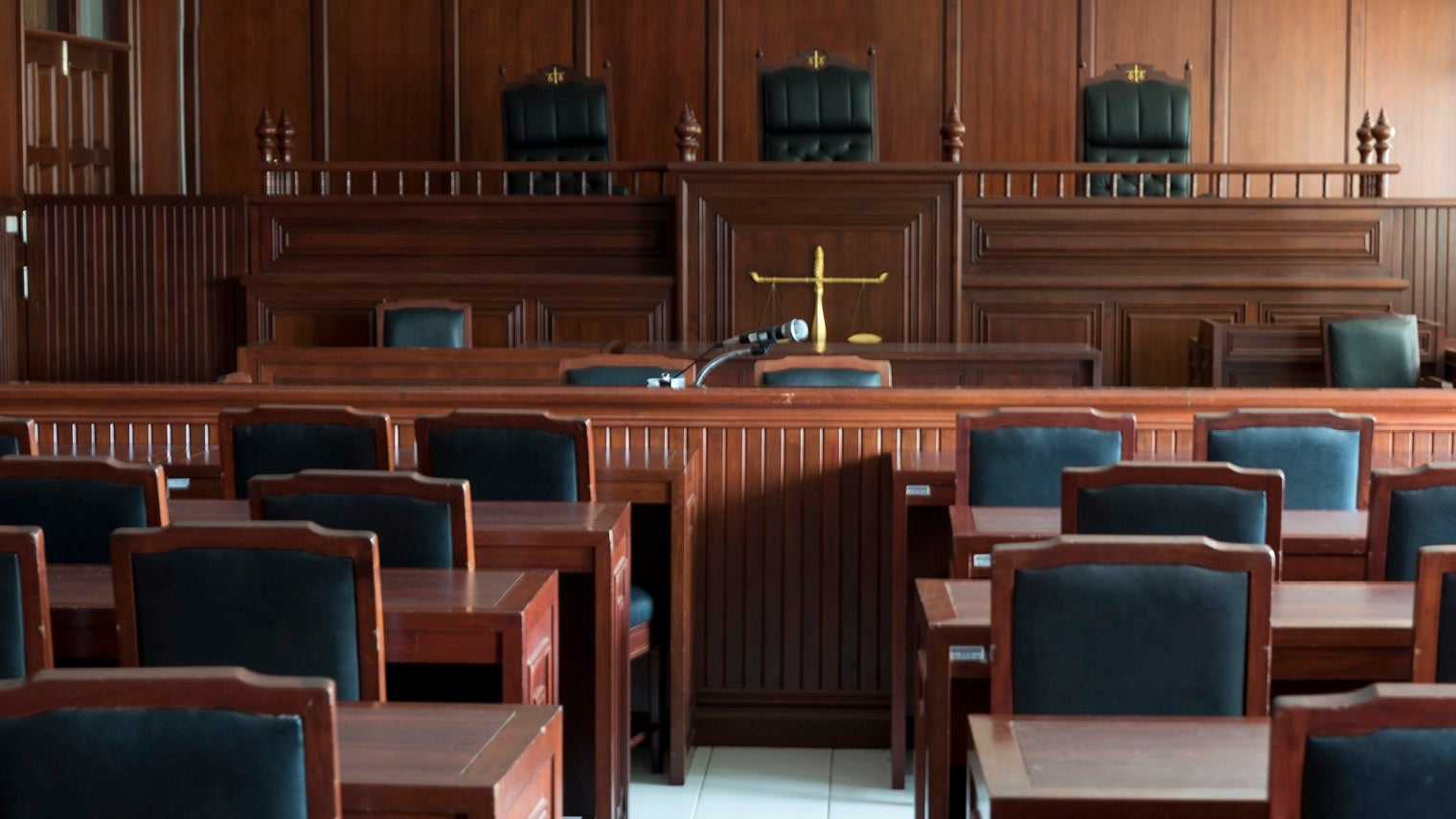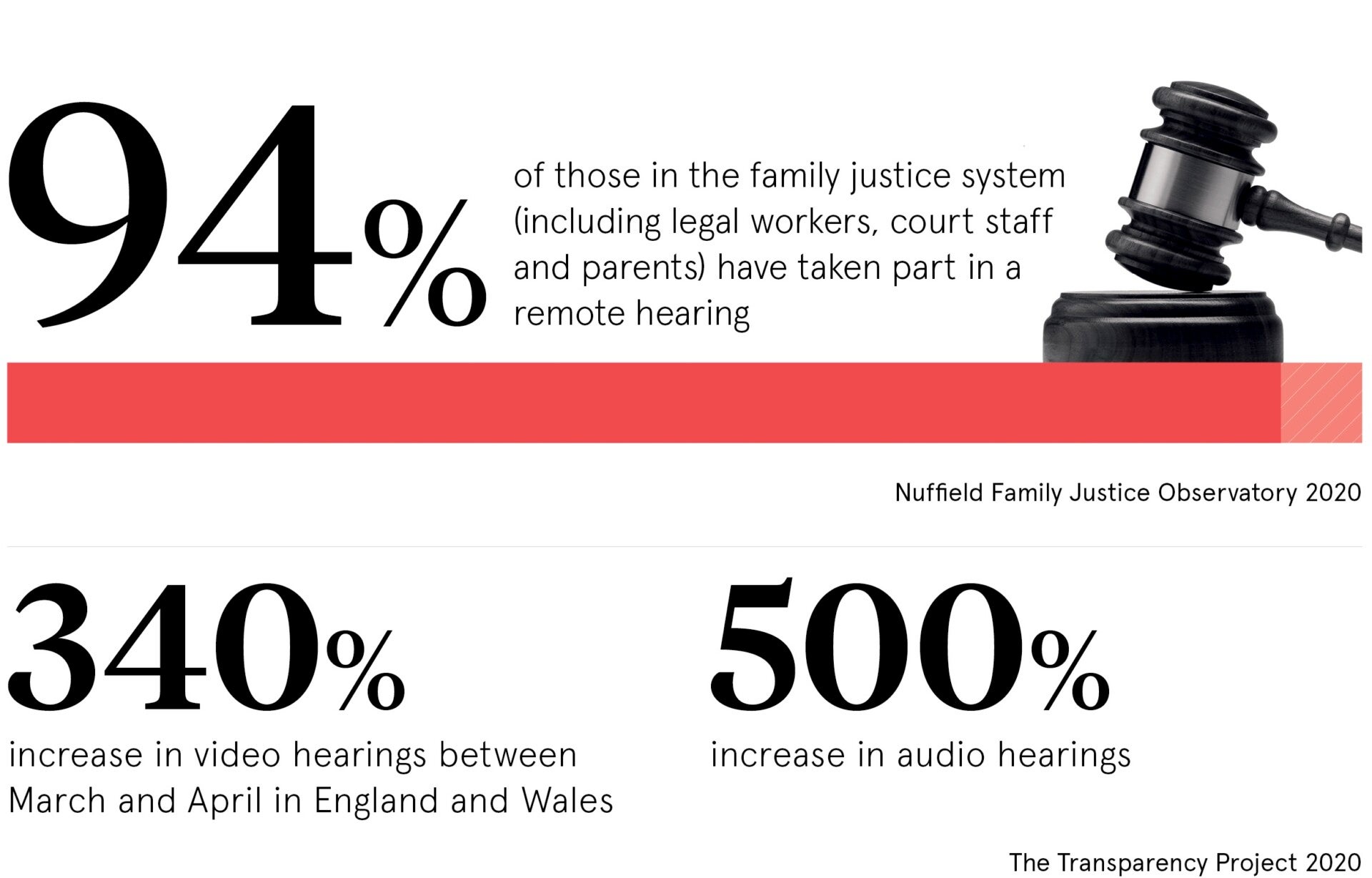
At the Odeon cinema in Edinburgh’s Fort Kinnaird retail park, the movie posters have been taken down and the popcorn machines covered up as jurors take their seats in one of the four auditoriums to attend a virtual court hearing.
These remote jury centres have allowed the Scottish High Court to restart criminal trials by beaming live court action directly onto the cinema screen, allowing jurors to watch and hear evidence while maintaining social distancing, something that wouldn’t have been possible inside the main court building. With a further 11 screens available in Glasgow, the court is now back up to full capacity.
“The real beauty in this approach is it provides a way of scaling up; we have a model that works and can be applied anywhere,” says Tim Barraclough, executive director of the Judicial Office for Scotland. “Some of the other solutions that have been considered require you to use more than one courtroom for a single trial, so that reduces the capacity of the system to run trials.”
Scotland’s work with remote jury trials is just one example of how public courts have responded to the impact of coronavirus. According to Remote Courts Worldwide, almost 60 countries have adopted some form of virtual court, ensuring courts remain open despite restrictions on physical hearings.
But operating courts in this way can create challenges. “When you’re running remote courts, there are really two key things that you need to sort out,” says Paul Sachs, founder of evidence-sharing platform CaseLines, which was acquired by Thomson Reuters in the summer. “Number one, you need to see the people and number two, you need to see the evidence.”
The first is easily dealt with by video-conferencing software, but sharing evidence in a convenient way is more problematic. While the default solution has tended to involve PDFs, this often leaves lawyers and judges scrambling around trying to find out what PDF to open and which page to go to, says Sachs.
“If the limit of your imagination is to transition from paper to PDFs, and proceed on that basis, then that’s not really solving anything,” he says. “When you go beyond this to cloud-based systems that are tuned to the needs of the courthouse, then the process is far more efficient.”
Video link limitations
Another challenge with virtual courts is assessing witness credibility over video, says Linklaters’ dispute resolution partner Tom Lidstrom, who was involved in one of the first virtual trials during the spring lockdown.
“If you have a case where the issues turn on basic credibility of witnesses and the court needs to have every opportunity to assess someone’s demeanour and someone’s reliability and honesty, a virtual trial does not really lend itself to that as well as an in-person hearing,” he says.
But there are benefits. Virtual courts can help improve public access, given that people can log on to proceedings from anywhere. Virtual courts can also help avoid backlogs by increasing capacity and reducing delays.
“If you don’t need people travelling to a particular place on a particular day, or if someone is unwell but they can work from home, there will be fewer postponements due to human factors,” says Lidstrom.
The big question now is to what extent virtual courts will continue in a post-pandemic environment. The Scottish courts’ remote jury centres, which are being expanded to include sheriff court jury trials, could potentially reduce existing case backlogs by using courtrooms that wouldn’t normally take a jury.
“What we’re doing at the moment is getting business back up to the levels it was before the pandemic started. But we’re not necessarily reducing the backlog, so we may have to find a bit of extra capacity to run more trials than normal and remote juries could support that,” says Barraclough. “This would require collaboration across the justice sector, including discussion with practitioners and the Crown.”
“What we’re doing at the moment is getting business back up to the levels it was before the pandemic started. But we’re not necessarily reducing the backlog, so we may have to find a bit of extra capacity to run more trials than normal and remote juries could support that,” says Barraclough. “This would require collaboration across the justice sector, including discussion with practitioners and the Crown.”

The future of remote hearings
Other parts of the judicial process might even be better suited to remaining virtual, for instance if a judge wanted to hold a hearing to settle a point of law or settle a request for a postponement.
“Prior to COVID, those kinds of matters would have been dealt with in the courthouse, now these ten-minute discussions can happen remotely and no longer clog up the courts and the waiting areas of the courtrooms,” says Sachs.
Professor Richard Susskind, author of Online Courts and The Future of Justice, believes courts are likely to adopt a blended approach once the pandemic ends, so some cases will remain virtual while others will return to in-person hearings.
“Some people are quite binary about it, but the biggest opportunity will be to identify for any particular type of case what the best form of resolution is,” he says.
For Susskind, virtual courts are just the beginning of what is possible with technology, such as allowing for asynchronous online hearings, where arguments and evidence can be submitted by parties at their own convenience, or using artificial intelligence to help court users predict the probability of success or failure for a particular case.
“Essentially, all we’re doing at the moment is dropping a physical hearing into Zoom. Some people say that is transformational, but working from the kitchen table isn’t transformation,” he says. “A lot of people are thinking video hearings are the endgame, but there’s so much yet to be done; we’re still at the foothills.”

At the Odeon cinema in Edinburgh’s Fort Kinnaird retail park, the movie posters have been taken down and the popcorn machines covered up as jurors take their seats in one of the four auditoriums to attend a virtual court hearing.
These remote jury centres have allowed the Scottish High Court to restart criminal trials by beaming live court action directly onto the cinema screen, allowing jurors to watch and hear evidence while maintaining social distancing, something that wouldn’t have been possible inside the main court building. With a further 11 screens available in Glasgow, the court is now back up to full capacity.
“The real beauty in this approach is it provides a way of scaling up; we have a model that works and can be applied anywhere,” says Tim Barraclough, executive director of the Judicial Office for Scotland. “Some of the other solutions that have been considered require you to use more than one courtroom for a single trial, so that reduces the capacity of the system to run trials.”
